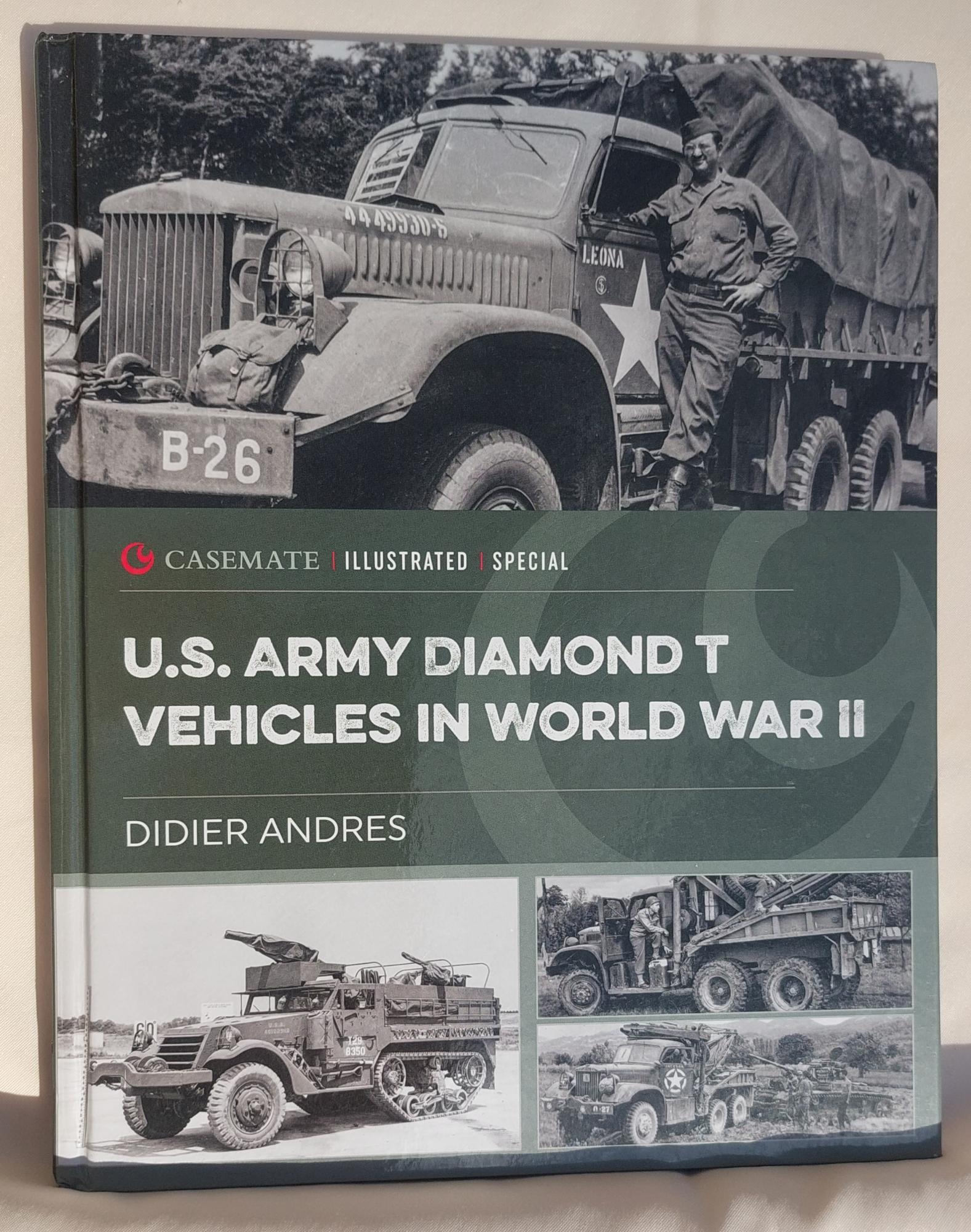U.S. Army Diamond T Vehicles in World War II
Contributor(s) :Alan McKay
Background
This Casemate Illustrated Special Series is the sixth issue in the series. Other books cover ambulances and medical vehicles of WWII, Chevrolet Trucks of WWII, U.S. Army vehicle markings 1944, and U.S. Army Signal Corps vehicles 1941-45.
From Review Insert
Between 1940 and 1945, Diamond T Motor Car Company supplied just over 50,000 vehicles to the US military, and also to the Allies. Of this, just over 30,000 were heavy 4-ton 6x6 trucks of varying types: cargo, tow truck, pontoon carrier, engineer, cartographic, etc. The “Diamond” would serve in all theaters of operations, wherever its robustness and reliability were necessary to complete the mission. Due to its expertise, Diamond T also produced the famous half-track, with more than 10,000 manufactured. All of these models are described in this work by Didier Andres, an expert in the subject. The text is illustrated throughout using archival and period photographs and diagrams.
About the Author
Didier Andres, born in Verviers in Belgium, is passionate about military history and particularly about American vehicles of World War II. He has a large archive of documents and imagery, and has contributed to books and magazines for twenty years. He is the author of US Army Chevrolet, US Army Ambulances & Medical Vehicles and US Army Signal Corps Vehicles.
What You Get
This is a hard bound edition in a standard 8¼ by 11 format, with 130 glossy pages. The book contains an Introduction, 15 chapters, A bibliography, and Acknowledgments. The Introduction presents a short concise history of the Diamond T Motor Car Company from its inception in 1905 until its final demise in 1975, when Diamond T-Reo Truck, Inc. declared bankruptcy. This chapter also includes information about Diamond T vehicles supplied during World War II.
Chapter 1 covers the Army’s request for a mid-weight capacity truck. By 1939, the U.S. Army had published five categories of vehicle payloads to be developed; ½-ton, 1 ½-ton, 2 ½-ton, 4-ton, and 7 ½‑ton. The ¼-ton vehicle chosen was created by Ford and was the ubiquitous Jeep. Dodge created the 1 ½-ton WC series, while Chevrolet created a 1 ½-ton cargo truck. GMC produced the famous CCKWX‑353 “Deuce and half.” Diamond T found its niche with the 4-ton cargo truck. Chapter 2 is a deep dive into the mechanics and design of the first-generation cargo truck (the Model 967). Chapter 3 is the same for the second generation of trucks. Finally, Chapter 4 finishes with details on the differences in the fourth-generation vehicles.
Chapters 5 through 11 each cover one specific model. Diamond T produced four basic models; cargo, wrecker, pontoon, and dump truck. They also made vehicles for the Canadian Army to their specifications. Chapter 10 covers the production of a total of 2197 bare chassis vehicles. These were divided out as 1181 short wheel-base (151-inches) with a winch, 583 long wheel-base (172-inches) with a winch, 295 short wheel-base without a winch, and 138 long wheel-base without a winch. These bare chassis models were mounted with everything from water tanks to a centrally mounted swinging boom crane. Other special vehicles included trucks for the reproduction of maps, trucks for spreading asphalt and bitumen, a rotary drill rig, flatbed truck and a tractor trailer. Chapter 11 deals with special service vehicles. These were unofficial field modifications creating everything from gasoline and water trucks to platform and specialty shop trucks with a front mounted lifting jib.
Chapter 12 deals with the over 55,000 half tracks produced by Diamond T. The half tracks were designed with standard parts and the various company’s White, Autocar, International Harvester, and Diamond T simply assembled them. Besides the standard M3, and M3A1 personnel carrier Diamond T also produced two specialty half tracks, the T-48 57-mm gun motor carriage and the T-19 105-mm howitzer carriage.
Chapter 13 delves into the details of the Diamond T Model 980/981 prime mover trucks. A total of 6548 prime movers were produced for use by Britain and the U.S. Army. Chapter 14 covers total vehicle production and particularities. Chapter 15 provides the technical specifications for trucks described in the previous chapters.
A bibliography of technical manuals and other documents is supplied along with acknowledgments is provided at the end of the book.
Bottom Line
Wow. This is the first Casemate title I have reviewed. The book is extensively researched and the photographs are documented. I was aware of Diamond T semis from modeling as a kid. But never dreamt of the impressive impact that this company had on the war effort in both World War I and World War II. By 1945 Diamond T had supplied 31,060 of the total trucks and 55,500 of the half-tracks taken under order by the U.S. Army.
I would like to heartily thank Casemate Publishers for providing the book for review, and to IPMS USA for giving me the opportunity to review it.








Comments
Add new comment
This site is protected by reCAPTCHA and the Google Privacy Policy and Terms of Service apply.
Similar Reviews